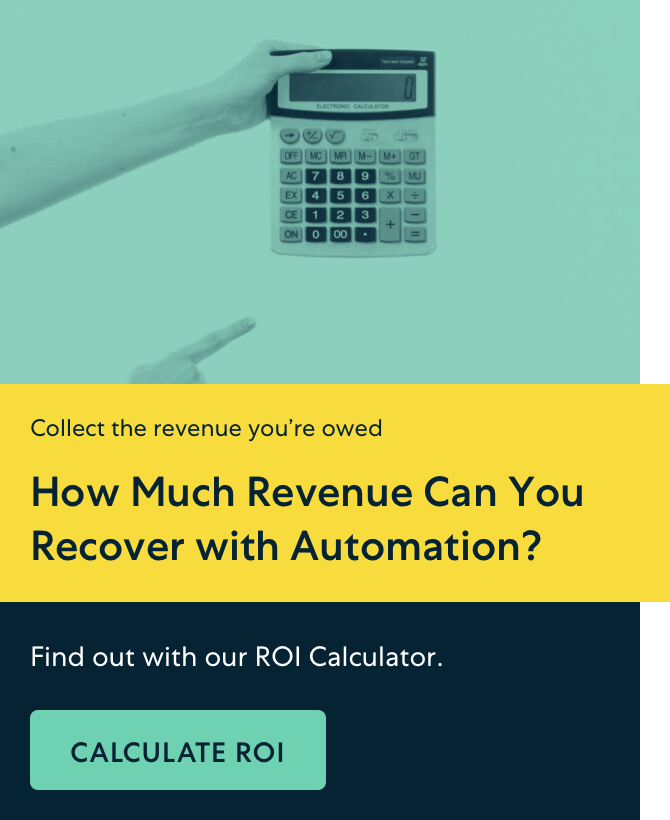Over the last decade or two, the SaaS industry has exploded in popularity. A 2022 report estimates the global SaaS market will reach $702.19 billion by 2030.
There are plenty of reasons I can point to for the success of the SaaS business model. One of the biggest? The promise of monthly recurring revenue (MRR).
“Introducing a subscription-based business model could increase a company’s valuation by up to 8 times,” financial services form Consero Global published in an article on its website. “Successful SaaS businesses that can demonstrate a recurring revenue for their software platforms average a six-fold revenue increase for valuation when compared to companies that sell perpetual licenses. Private equity investors and VCs are more interested in these businesses because they can demonstrate reliable revenue streams.”
No doubt, the recurring revenue model can be a key factor in your business’s success. But, to really reap the rewards, your business needs to be able to send accurate, timely invoices—you know, to actually collect all that recurring revenue.
And despite SaaS being such a modern industry, we speak to a shocking number of businesses in the space that have an antiquated SaaS billing process. They might handle billing operations through:
- an entirely manual process, consisting of a series of spreadsheets,
- legacy billing software that hasn’t had a new feature release since 2010, or
- a software system that isn’t meant for complex billing, but still kinda gets the job done—for example, a module in a CRM.
There are many problems that can stem from using the wrong billing systems—our entire blog is dedicated to talking about them. And as it turns out, something as seemingly simple as billing for a one-time charge on inflexible tech can have deep repercussions for your business.
How and why might a SaaS business issue one-time charges?
We’ve already spoken about the beauty of recurring monthly revenue—though this is likely something you’re familiar with firsthand.
While the bulk of most SaaS companies’ revenue comes from recurring subscription payments, there are a few instances where one-off charges may come into play—commonly in the form of implementation fees or customer service fees.
Three problems stem from invoicing one-time charges with the wrong SaaS billing systems
Say a SaaS business needs to charge a one-time implementation fee of $100, but its subscription management software has an inflexible catalog and only supports recurring billing. Maybe the SaaS billing team could get an implementation fee added to the catalog, but the company’s dev team would need to be pulled off high-priority projects to hard-code it in. They just don’t have time to do that.
What can the accounts receivable (AR) team do?
Coincidentally, the business offers its Bronze plan at the same price point as the implementation fee—$100/month. So, the AR Specialist gets creative and builds a workaround.
- First, she creates the customer’s invoice as usual, including all the relevant subscription details.
- Next, she adds a new Bronze subscription in place of the implementation fee.
- Finally, she’ll need to remember to cancel the customer’s extra Bronze subscription before the next billing cycle.
Sound complex? It is—yet it’s a common workaround for businesses that find themselves at the mercy of an inflexible SaaS billing catalog.
And it creates a ripple effect that can be felt throughout the business.
1. Artificially inflated churn rates
By regularly signing customers up for and subsequently canceling an additional subscription, your month- and year-end reports aren’t going to reflect your business’s real churn numbers.
Remember Consero Global’s advice from earlier in the article? Investors love subscription businesses because they generate reliable recurring revenue.
If your churn numbers are high, your stakeholders won’t be happy. And if you explain to them that, actually, your churn reports are wildly inaccurate, well…they won’t be happy then, either.
2. Irate customers
The customer opens his invoice expecting to see a $100 implementation fee. While the total amount due is what he anticipated, he sees he’s been signed up for a new Bronze plan subscription, which he never authorized.
Concerned, he files a ticket with your SaaS business’s support team, taking their attention away from more pressing issues. They explain the situation and assure him the additional subscription will be canceled by the time he receives his next invoice.
Fast-forward one month—the customer receives his next invoice and the AR Specialist forgot to cancel the additional Bronze subscription, charging him for another month of a service he didn’t receive.
According to Forbes, a whopping 96% of customers will stop doing business with a company after a bad customer experience.
Your SaaS billing model should create a positive—or at least neutral—experience for your customers. Otherwise, the inflation of those churn numbers may not be artificial for long.
3. A sales tax nightmare
This one can be a grey area, depending on where you do business.
You’ve sold a professional service, a sale that isn’t taxable in most states. But you’ve invoiced your customer for a subscription, something that, in many cases, is taxable. So you have one of three options:
- Charge your customer tax on the fake subscription.
- Don’t collect the tax from your customer, but pay it out of (your business’s) pocket.
- Don’t collect the tax and don’t remit it, either.
None of these scenarios have good implications. You’re either upsetting your customer, leaking revenue, or opening yourself up to trouble if the IRS comes knocking.
For recurring billing businesses, sales tax can quickly get complicated—especially if you’re selling in multiple currencies and tax jurisdictions. Because of this, dedicated tax software would be a helpful addition to a modernized tech stack.
The right subscription billing system enables SaaS scale
While the bulk of a SaaS company’s revenue comes from its regular subscription pricing plans, it needs an agile subscription management platform that can handle any form of SaaS billing.
The right piece of fintech provides a competitive edge by enabling complex billing, facilitating discounts, and helping you get new products, plans, and features to market quicker.
And while subscription billing may seem like a relatively small piece of the puzzle that is scaling, using modern, adaptive SaaS billing software helps your business collect more money and automates repetitive tasks to free up your AR team’s time. The best subscription management platform:
- integrates with your payment gateway and offers a suite of collections assurance features to prevent failed payments and make sure you’re collecting the revenue you’re owed,
- automates revenue recognition in accordance with ASC 606 guidelines, and
- allows you to easily implement a hosted customer portal to let customers manage subscriptions for themselves.
With time freed up from all of those tasks, your team can focus on more important projects that’ll actually grow the business.
Whether or not your SaaS company deals heavily in one-time charges, modern tech that can handle any SaaS billing model is a requisite for doing business in a modern world.
FAQs about SaaS Biling Model
Q: What is the SaaS Billing model and how does it relate to One-Time Charges?
The SaaS billing model is based largely on a subscription-based system, earning its revenue primarily from monthly recurring payments. However, some occasions might require one-time charges, such as implementation fees or customer service fees. One-time charges often pose challenges when the SaaS billing system is inflexible or not designed to handle single-instance billing.
Q: Why is an adaptable SaaS billing system important?
An adaptable SaaS billing system is important because it can handle any form of SaaS billing, including both regular subscription payments and one-time charges. This agility allows the system to cater accurately to various business requirements, facilitating complex billing mechanisms, discounts, and new products or services, thus providing a significant competitive advantage.
Q: What problems can arise from having the wrong SaaS billing technology?
A rigid or incorrect SaaS billing system can result in a multitude of problems, including:
- Hampering subscription management by making it difficult to bill for one-time charges.
- Causing fraudulent sales figures and churn numbers, which can confuse stakeholders and potentially harm the company’s reputation.
- Creating a negative customer experience resulting in higher churn rates and lost revenue.
- Introducing potential legal issues related to tax collection and remittance.
Q: How can a modern and flexible SaaS billing software help businesses?
Modern SaaS billing software can enhance a company’s revenue cycle by enabling automated and accurate billing for both recurring and one-time charges. The software can integrate with payment gateways, automate revenue recognition per ASC 606 guidelines, and facilitate the implementation of hosted customer portals for self-service subscription management. Overall, it automates repetitive tasks, freeing up the team’s time for more valuable activities.
Q: What is the potential impact of having the wrong SaaS billing technology on customer experience?
An inadequate SaaS billing system can lead to billing confusion or inaccuracies that negatively impact the customer experience. It may cause unexpected subscription additions leading to higher charges, failed cancellation of services, or incorrect tax collection. Any of these incidents can lead to customer dissatisfaction and subsequently higher churn rates.
Q: How do one-time charges relate to taxation in SaaS billing?
The tax implications of one-time charges can be a concern as different jurisdictions may have varying regulations. Certain professional services may be non-taxable, while subscriptions often are. An imprecise SaaS billing system could misclassify these, leading to either overcharging customers or incorrect company remittance, which can result in regulatory issues. As sales tax can get complicated quickly for recurring billing businesses, integration with dedicated tax software is advisable.







